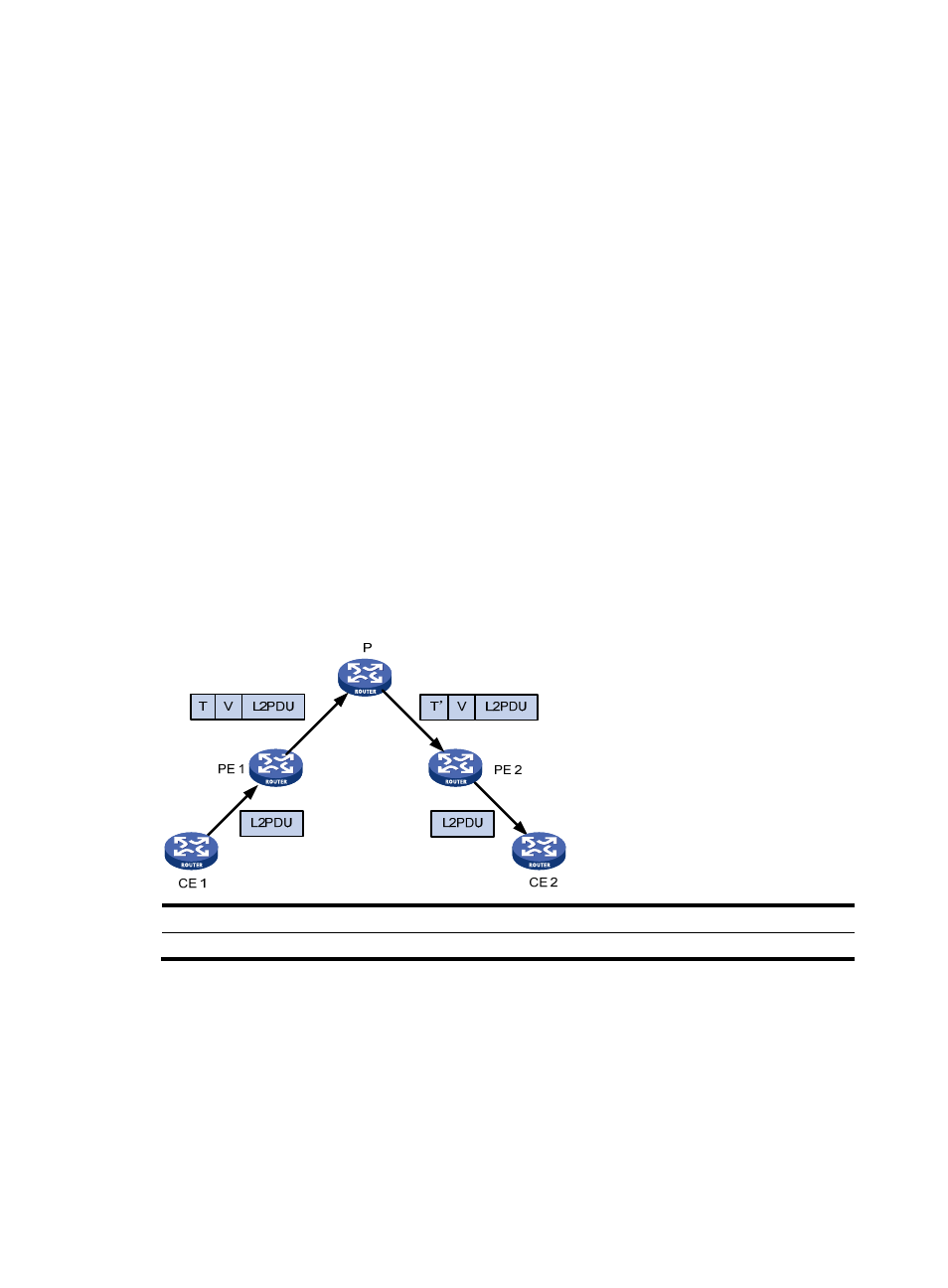Basic concepts of mpls l2vpn, Implementation of mpls l2vpn – H3C Technologies H3C S10500 Series Switches User Manual
Page 200

189
•
Guaranteed reliability and private routing information security: As no routing information of users
is involved, MPLS L2VPN neither tries to obtain nor processes the routing information of users,
guaranteeing the security of the user VPN routing information.
•
Support for multiple network layer protocols, such as IP, IPX, and SNA.
Basic concepts of MPLS L2VPN
In MPLS L2VPN, the concepts and principles of CE, PE, and P are the same as those in MPLS L3VPN:
•
Customer edge (CE) device: A CE resides on a customer network and has one or more interfaces
directly connected with service provider networks. It can be a router, a switch, or a host. It cannot
"sense" the existence of any VPN, neither does it need to support MPLS.
•
Provider edge (PE) device: A PE resides on a service provider network and connects one or more
CEs to the network. On an MPLS network, all VPN processing occurs on the PEs.
•
Provider (P) device: A P router is a backbone router on a service provider network. It is not directly
connected with any CE. It only needs to be equipped with basic MPLS forwarding capability.
MPLS L2VPN uses label stacks to implement the transparent transmission of user packets in the MPLS
network.
•
Outer label, also called “tunnel label”, is used to transfer packets from one PE to another.
•
Inner label, also called “VC label”, identifies different connections between VPNs.
•
When receiving labeled packets, a PE determines to which CE the packets are to be forwarded
according to the VC labels.
Figure 47 MPLS L2VPN label stack processing
L2 PDU: Layer 2 protocol data unit
T represents tunnel label. V represents VC label. T’ represents swapped tunnel label.
Implementation of MPLS L2VPN
MPLS L2VPN can be implemented in one of the following methods:
•
Circuit Cross Connect (CCC) and Static Virtual Circuit (SVC)—Two methods of implementing MPLS
L2VPN by configuring VC labels statically.
•
Martini—A method for establishing point-to-point links to implement MPLS L2VPN. It uses Label
Distribution Protocol (LDP) as a signaling protocol to transfer VC labels.
